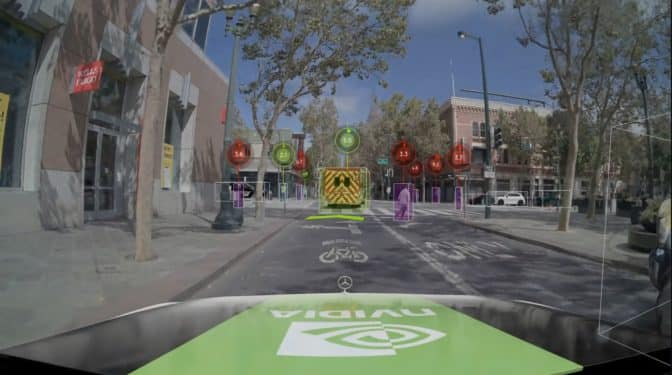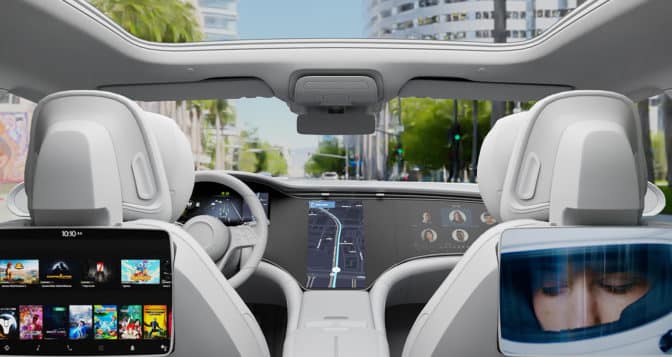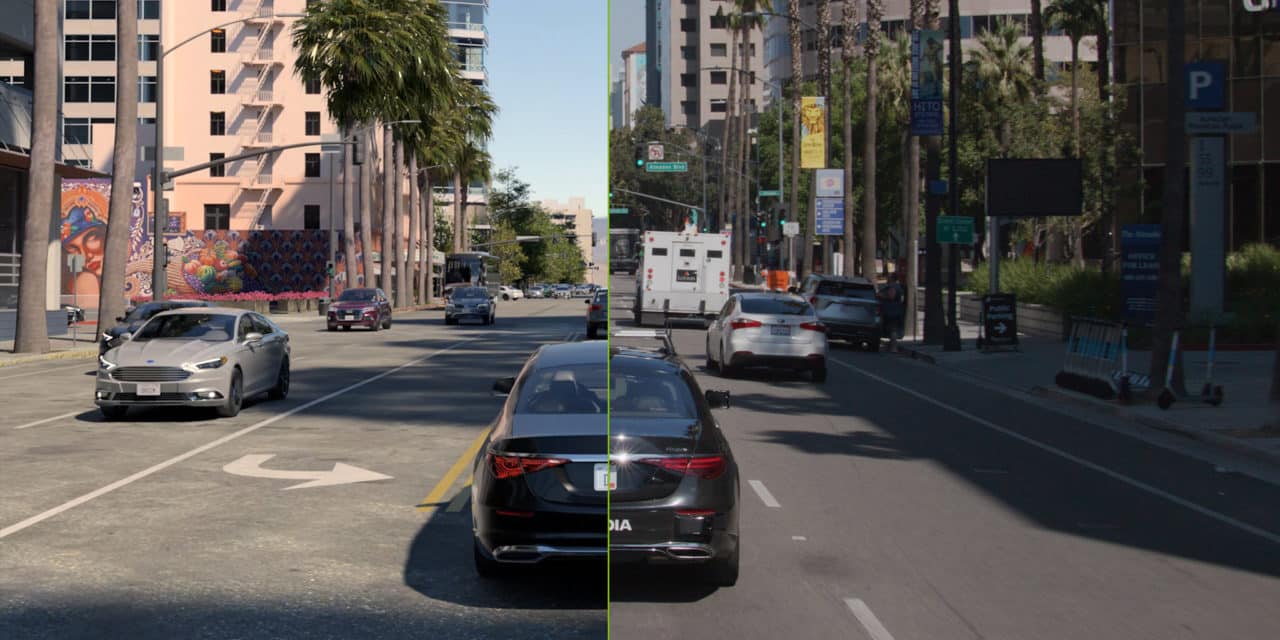As the autonomous vehicle industry enters the next year, it will start navigating into even greater technology frontiers.
Next-generation vehicles won’t just be defined by autonomous driving capabilities. Everything from the design and production process to the in-vehicle experience is entering a new era of digitization, efficiency, safety and intelligence.
These trends arrive after a wave of breakthroughs in 2022. More automakers announced plans to build software-defined vehicles on the NVIDIA DRIVE Orin system-on-a-chip — including Jaguar Land Rover, NIO, Polestar, Volvo Cars and Xpeng. And in-vehicle compute pushed the envelope with the next-generation NVIDIA DRIVE Thor platform.
Delivering up to 2,000 trillion floating operations per second, DRIVE Thor unifies autonomous driving and cockpit functions on a single computer for unprecedented speed and efficiency.
In the coming year, the industry will see even more wide-ranging innovations begin to take hold, as industrial metaverse and cloud technologies become more prevalent.
Simulation technology for AV development has also flourished in the past year. New tools and techniques on NVIDIA DRIVE Sim, including using AI tools for training and validation, have narrowed the gap between the virtual and real worlds.
Here’s what to expect for intelligent transportation in 2023.
Enter the Metaverse
The same NVIDIA Omniverse platform that serves as the foundation of DRIVE Sim for AV development is also revolutionizing the automotive product cycle. Automakers can leverage Omniverse to unify the 3D design and simulation pipelines for vehicles, and build persistent digital twins of their production facilities.
Designers can collaborate between 3D software ecosystems from anywhere in the world, in real time, with Omniverse. With full fidelity RTX ray tracing showing physically accurate lighting and reflections and physical behavior, vehicle designs can be more acutely evaluated and tested before physical prototyping ever begins.
Production is the next step in this process, and it requires thousands of parts and workers moving in harmony. With Omniverse, automakers can develop a unified view of their manufacturing processes across plants to streamline operations.
Planners can access the full-fidelity digital twin of the factory, reviewing and optimizing as needed. Every change can be quickly evaluated and validated in virtual, then implemented in the real world to ensure maximum efficiency and ergonomics for factory workers.
Customers can also benefit from enhanced product experiences. Full-fidelity, real-time car configurators, 3D simulations of vehicles, demonstrations in augmented reality and virtual test drives all help bring the vehicle to the customer.
These technologies bridge the gap between the digital and the physical, as the buying experience evolves to include both physical retail spaces and online engagement.
Cloud Migration
As remote work becomes a permanent fixture, cloud capabilities are proving vital to growing industries, including transportation.
Looking ahead, AV developers will be able to access a comprehensive suite of services using NVIDIA Omniverse Cloud to design, deploy and experience metaverse applications anywhere. These applications include simulation, in-vehicle experiences and car configurators.
With cloud-based simulation, AV engineers can generate physically based sensor data and traffic scenarios to test and validate self-driving technology. Developers can also use simulation to design intelligent vehicle interiors.

These next-generation cabins will feature personalized entertainment, including streaming content. With the NVIDIA GeForce NOW cloud gaming service, passengers will be able to stream over 1,000 titles from the cloud into the vehicle while charging or waiting to pick up passengers.
Additionally, Omniverse Cloud enables automakers to offer a virtual showroom for an immersive experience to customize a vehicle before purchasing it from anywhere in the world.
Individualized Interiors
Autonomous driving capabilities will deliver a smoother, safer driving experience for all road users. As driving functions become more automated across the industry, vehicle interiors are taking on a bigger role for automakers to create branded experiences.
In addition to gaming, advances in AI and in-vehicle compute are enabling a range of new infotainment technologies, including digital assistants, occupant monitoring, AV visualization, video conferencing and more.

With NVIDIA DRIVE Concierge, automakers can provide these features across multiple displays in the vehicle. And with software-defined, centralized compute, they can continuously add new capabilities over the air.
This emerging cloud-first approach is transforming every segment of the AV industry, from developing vehicles and self-driving systems to operating global fleets.
